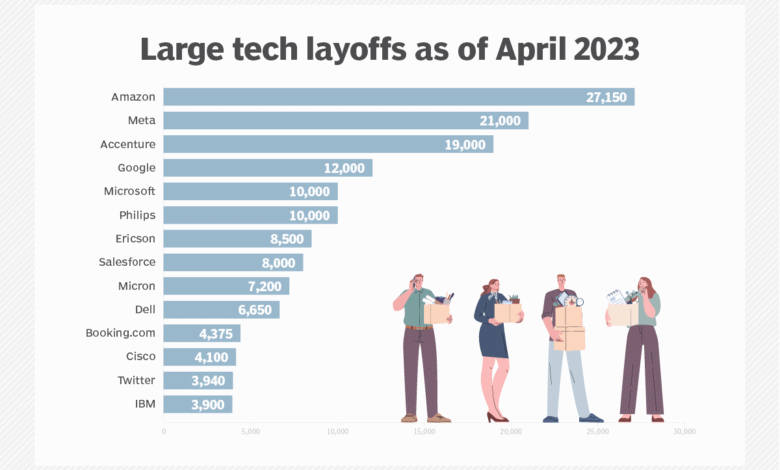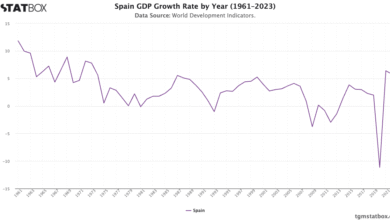Corporate Layoffs: Companies Making Cost-Cutting Moves

Corporate layoffs have surged recently, with numerous companies announcing significant job cuts as part of their restructuring efforts. Amid heightened economic uncertainty and evolving layoff trends, organizations are increasingly resorting to workforce reduction as a strategy to maintain profitability. Tech giants like Microsoft and Amazon have made headlines for their drastic measures, while traditional businesses like Procter & Gamble also face pressures to streamline operations. The economic impact of layoffs is felt not just by the affected employees, but also by families and communities that rely on stable employment. As businesses navigate these turbulent times, the ripple effects of corporate downsizing underscore the critical need for adaptability in today’s job market.
In recent weeks, the landscape of corporate America has been marred by extensive workforce adjustments, often referred to as mass job cuts or employment downsizing. These strategic firings, primarily fueled by economic challenges and advancements in technology like artificial intelligence, highlight a significant shift in hiring dynamics. With many firms now focusing on operational efficiency, the trends indicate a growing acceptance of reducing workforce numbers as a necessary measure. The ramifications of these layoffs extend beyond individual companies, influencing the overall employment climate and economic health. As job opportunities become scarcer, both employees and employers are left grappling with the consequences of this evolving corporate paradigm.
The Rise of Corporate Layoffs Amid Economic Uncertainty
In recent weeks, corporate layoffs have surged, as companies grapple with economic challenges and heightened pressure to reduce operational costs. Major firms like Walmart, Amazon, and Microsoft have announced significant job cuts, reflecting a broader trend of workforce reduction across various sectors. As organizations navigate through increasing trade tensions and shifting economic policies, the necessity for workforce adjustments has become apparent, raising concerns about the future of employment in America.
This wave of layoffs is not just a response to immediate financial pressures but is also indicative of longer-term strategic shifts in corporate methodologies. Companies are integrating workforce reductions into their growth and cost-efficiency plans, as leaders emphasize the need for adaptability in today’s fast-changing marketplace. This trend is visible in the tech industry, where artificial intelligence plays a significant role in reshaping staffing decisions and operational structures.
Frequently Asked Questions
What are the recent trends in corporate layoffs during economic uncertainty?
Corporate layoffs have surged in recent weeks as companies face mounting pressure to reduce costs amidst global economic uncertainty. Factors such as trade policies and declining private-sector hiring have intensified the need for workforce reductions, with notable downsizing from major companies like Walmart, Amazon, and Microsoft.
How are AI advancements influencing corporate layoffs?
AI advancements are emerging as a significant factor in many corporate layoffs. Companies like Klarna and CrowdStrike have cited AI developments as a reason for workforce reductions. These layoffs are often part of broader restructuring strategies aimed at adapting to technological changes and enhancing operational efficiency.
What are the key reasons behind the recent job cuts announced by companies?
Recent job cuts in corporate America are primarily driven by the need for cost reductions, restructuring initiatives, and the integration of technology such as AI. Major corporations including Procter & Gamble and Citigroup are implementing layoffs as part of their efforts to streamline operations and respond to economic pressures.
What do workforce reductions signify for the U.S. job market?
Workforce reductions, particularly among leading firms, signal potential instability in the U.S. job market. As companies announce layoffs, concerns about economic strength and hiring trends grow, reflecting a cautious outlook on employment opportunities amid rising trade tensions and cost-cutting initiatives.
Which companies are currently facing significant workforce reductions?
Several prominent companies are currently implementing significant workforce reductions, including Procter & Gamble, Microsoft, and Walmart. These companies have announced various job cuts as part of their restructuring efforts to adapt to changing economic conditions and technological advancements.
What should employees know about the impact of corporate downsizing on their jobs?
Employees should be aware that corporate downsizing can lead to uncertainty and job security concerns. Layoffs often affect specific sectors more directly impacted by economic conditions and technological changes. It’s important for workers to stay informed about company restructuring plans and consider alternative career paths.
How does economic impact from layoffs ripple through corporate America?
The economic impact of layoffs extends beyond individual companies, affecting consumer confidence and market stability. As businesses reduce their workforce, this can lead to decreased spending, slower economic growth, and a ripple effect within industries reliant on consumer engagement.
What strategies do companies implement to cope with workforce reductions?
To cope with workforce reductions, companies often focus on restructuring their operations, integrating technology, and enhancing efficiency. This may include realigning resources to prioritize areas of growth while mitigating the financial impact of layoffs.
What legal protections exist for employees facing layoffs?
Employees facing layoffs may be protected by laws such as the Worker Adjustment and Retraining Notification (WARN) Act, which provides notifications about mass layoffs. Additionally, companies may offer severance packages or assistance programs to support affected workers during the transition.
How do layoffs affect employee morale and company culture?
Corporate layoffs can significantly impact employee morale and company culture, often leading to feelings of insecurity and mistrust among remaining staff. Companies need to communicate transparently and provide support to maintain engagement and retain talent post-layoff.
| Company | Number of Jobs Cut | Reason for Layoffs |
|---|---|---|
| Procter & Gamble | 7,000 | Restructuring initiative, 15% of non-manufacturing workforce |
| Microsoft | 6,000 | 3% of employees |
| Citigroup | 3,500 | IT services unit in China |
| Walmart | 1,500 | Global technology and e-commerce fulfillment teams |
| Klarna | 40% of workforce | AI developments and hiring freeze |
| CrowdStrike | 500 | AI transformation |
| Disney | Several hundred | Across various divisions |
| Chegg | 248 | 22% of workforce, competition from AI tools |
| Amazon | 100 | Devices and services division |
| Warner Bros. Discovery | Fewer than 100 | Part of reorganization |
Summary
Corporate layoffs have significantly increased in recent weeks as companies navigate economic pressures and technological advancements. With organizations like Procter & Gamble, Microsoft, and Amazon announcing substantial workforce reductions, it is evident that businesses are adapting to an uncertain economic climate driven by trade policies and the rise of artificial intelligence. These layoffs form part of broader cost-cutting strategies aimed at maintaining competitiveness and efficiency in a rapidly evolving market.



